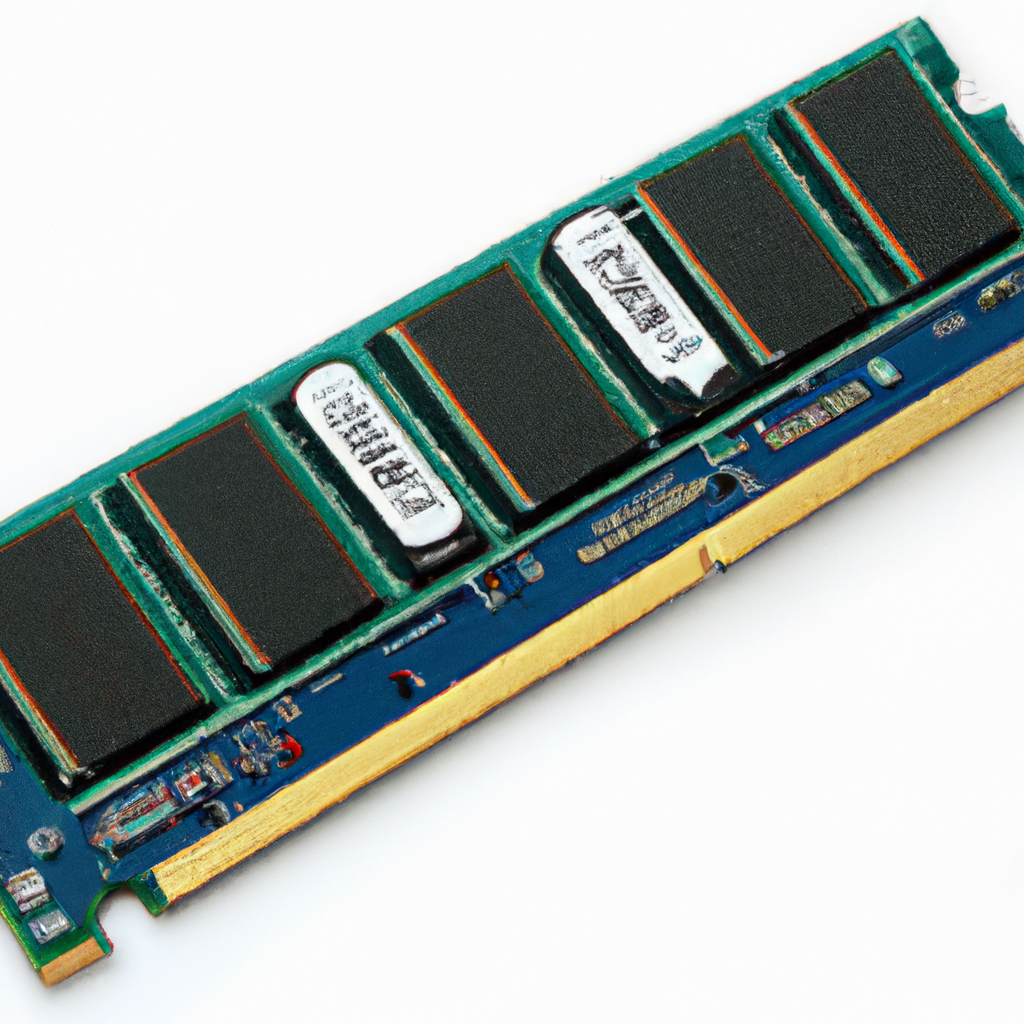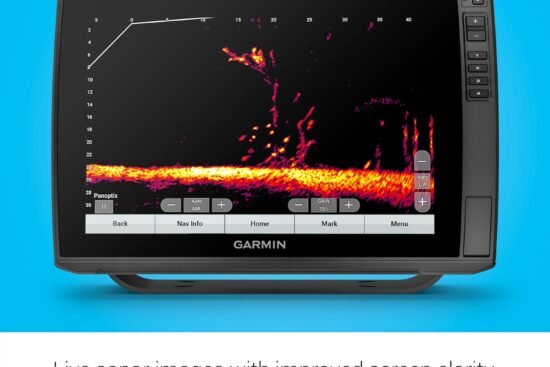
If you’ve ever found yourself staring at the overwhelming array of laptops on the market, unsure of which one to choose, you’re not alone. With so many specifications to consider, it can be challenging to figure out what exactly you need for the best performance. One crucial factor that often gets overlooked is the amount of RAM your laptop possesses. RAM, or Random Access Memory, is essential for multitasking, running applications smoothly, and ensuring overall system performance. In this article, we’ll explore the question on everyone’s mind: How much RAM do I need for optimal laptop performance? Let’s dive right in and find out!

The Importance of RAM for Laptop Performance
Understanding the Role of RAM in Laptop Performance
When it comes to laptop performance, one component that plays a crucial role is Random Access Memory, commonly known as RAM. RAM serves as temporary storage for data that the laptop’s processor needs to access quickly. It allows your laptop to run multiple programs simultaneously and switch between them seamlessly. Without sufficient RAM, your laptop may experience sluggish performance, lag, and slow response times. Therefore, understanding the importance of RAM and its impact on your laptop’s performance is essential.
RAM as Temporary Storage for Data
RAM acts as a temporary storage space where data from the hard drive is loaded when you open an application or file. Unlike the hard drive, which stores data for the long term, RAM provides fast and immediate access to this data. The more RAM you have, the more data your laptop can store in this fast-access memory, resulting in quicker access times and smoother program execution. Think of RAM as your laptop’s working memory that provides the resources needed to execute tasks efficiently.
RAM’s Impact on Multitasking
In today’s fast-paced digital world, multitasking has become the norm. Whether you’re browsing the web, streaming videos, working on a document, or editing photos, the ability to switch between tasks seamlessly is crucial. This is where RAM comes into play. Sufficient RAM allows your laptop to handle multiple tasks simultaneously without slowing down. It ensures that each application has enough memory to operate smoothly, enhancing your overall multitasking experience.
RAM’s Influence on Application Performance
RAM plays a significant role in determining the performance of individual applications. When you open an application, it uses a portion of your laptop’s RAM to store and process its data. Insufficient RAM can lead to reduced application performance, causing delays, lags, and even crashes. By having enough RAM, you provide the necessary resources for applications to run smoothly, resulting in faster loading times and better performance. This is especially important for memory-intensive applications such as video editing software, gaming programs, and virtual machines.
Factors to Consider When Determining Optimal RAM
Operating System Requirements
One crucial factor to consider when determining the optimal amount of RAM for your laptop is the operating system requirements. Different operating systems have varying RAM recommendations, and it’s essential to ensure that your laptop meets these requirements for optimal performance. For example, while a laptop with 4GB of RAM may be sufficient for basic tasks on a 32-bit operating system, a 64-bit operating system might require at least 8GB of RAM for optimal performance.
Type and Frequency of Tasks
The type and frequency of tasks you perform on your laptop also influence the amount of RAM you need. If you primarily use your laptop for web browsing, word processing, and other basic tasks, you can get by with a lower amount of RAM. However, if you engage in memory-intensive activities such as video editing, 3D rendering, or running virtual machines, you will need a higher amount of RAM to ensure smooth and efficient performance.
Minimum Recommended RAM for Specific Software
Different software applications have varying RAM requirements. It’s crucial to research and determine the minimum recommended RAM for the specific software you use regularly. This information can typically be found on the software developer’s website or in the software’s documentation. By meeting or exceeding these recommendations, you ensure that your laptop can run the software optimally without any performance bottlenecks.
Planning for Future Needs
When determining the optimal amount of RAM for your laptop, it’s important to consider your future needs. Technology is constantly evolving, and software requirements tend to increase over time. By investing in more RAM than you currently need, you future-proof your laptop and ensure that it can handle upcoming software updates and advancements without requiring an immediate upgrade. Additionally, having more RAM than necessary allows your laptop to handle unexpected spikes in memory requirements and increases its overall performance capabilities.
Determining the Right Amount of RAM for Your Needs
Analyzing Your Current RAM Usage
Before deciding on the right amount of RAM for your needs, it’s helpful to analyze your current RAM usage. Most operating systems provide tools that allow you to monitor your RAM usage and identify any patterns of high usage. By observing your RAM usage during different tasks, you can get a better understanding of how much RAM you require for your typical usage scenarios.
Considering Future Requirements and Upgrades
As mentioned earlier, considering your future needs is crucial when determining the right amount of RAM for your laptop. Take into account any planned software upgrades or potential changes in your usage patterns. If you anticipate using more memory-intensive applications or expanding into new tasks, it’s wise to opt for more RAM to accommodate these future requirements.
Consulting Software and Hardware Developers
To ensure you make an informed decision about the amount of RAM you need, consider consulting software and hardware developers. Software developers can provide recommendations based on the specific requirements of their applications. Hardware developers, on the other hand, can guide you on the maximum RAM capacity supported by your laptop and any limitations or considerations you need to be aware of.
Balancing Budget and Performance
Lastly, it’s essential to strike a balance between your budget and the desired performance. RAM prices can vary significantly, especially for higher capacity modules. Consider your financial constraints and prioritize the level of performance you need for your everyday tasks. Remember that having more RAM than required can enhance your laptop’s performance but may not be cost-effective if you don’t utilize it fully.
Common Misconceptions About RAM and Performance
More RAM Always Equals Better Performance
While it is true that having more RAM can improve performance in many cases, it’s not a guarantee of better overall performance. Once your laptop has enough RAM to handle the tasks at hand comfortably, adding more RAM may not yield significant performance gains. Other components such as the processor, graphics card, and storage speed also play important roles in determining overall performance.
RAM is the Only Factor Affecting Laptop Speed
While RAM is indeed a critical factor in laptop speed, it’s not the sole determining factor. The processor (CPU), graphics card (GPU), storage type (SSD vs. HDD), and overall system optimization also contribute to the speed and responsiveness of a laptop. It’s important to consider these factors holistically and ensure that all components are well-balanced for optimal performance.
Adding Too Much RAM Can Be Detrimental
While adding more RAM than necessary may not provide significant performance gains, it generally does not cause any detrimental effects. Your laptop will simply not utilize the excess RAM, but it won’t harm the system. However, it’s important to ensure that your laptop’s hardware is compatible with higher RAM capacities and that your operating system supports it.
Closing Unnecessary Programs Will Free Up RAM
One common misconception is that closing unnecessary programs will free up RAM. While closing programs does free up some RAM, it doesn’t necessarily lead to a significant performance boost. Modern operating systems are designed to manage RAM efficiently and automatically prioritize active tasks. Instead of focusing on manually closing programs, it’s more beneficial to optimize your RAM usage through other methods, as discussed later in this article.

Optimizing RAM Usage for Enhanced Laptop Performance
Closing Unnecessary Background Processes
Although manually closing unnecessary programs won’t provide a significant boost, closing unnecessary background processes can help optimize your RAM usage. Background processes such as unnecessary system utilities or apps running in the background can consume valuable RAM resources. By identifying and disabling unnecessary background processes, you can free up RAM for more important tasks, improving overall performance.
Using Resource-Efficient Software
Another way to optimize RAM usage is by using resource-efficient software. Some software applications are known to be more resource-intensive than others, consuming large amounts of RAM even for basic functionality. Consider using alternatives to such software or optimizing their settings to reduce their RAM footprint. Opting for lightweight applications and ensuring your software is up to date can also contribute to a smoother experience.
Disk Cleanup and Maintenance
Disk cleanup and maintenance can indirectly help optimize RAM usage by improving overall system performance. Regularly cleaning unnecessary files, removing temporary files, and defragmenting your hard drive can reduce the strain on RAM and enhance the overall responsiveness of your laptop. By reducing the unnecessary load on RAM, you allow it to allocate resources more efficiently.
Using Virtual RAM or Ready Boost
In some cases, using virtual RAM or Ready Boost can provide a performance boost. Virtual RAM, also known as a paging file, allows your laptop to use a portion of your hard drive as temporary storage when RAM capacity is exceeded. While virtual RAM is not as fast as physical RAM, it can help prevent excessive swapping between RAM and the hard drive, improving overall performance. Ready Boost, a feature introduced in Windows, allows you to use external USB flash drives as a temporary cache for frequently accessed data, further enhancing performance.
Effects of Insufficient RAM on Laptop Performance
Frequent System Slowdowns and Freezes
Insufficient RAM can lead to frequent system slowdowns and freezes. When your laptop’s RAM is overwhelmed with data, it struggles to keep up with the demand, causing delays and unresponsive behavior. You may experience programs taking longer to open, delays in executing tasks, and even temporary lockups or crashes. With insufficient RAM, your overall productivity and user experience can suffer.
Inability to Run Memory-Intensive Applications
Certain memory-intensive applications, such as video editing software, virtual machines, or complex 3D rendering programs, require a significant amount of RAM to run smoothly. If your laptop doesn’t have enough RAM to accommodate these applications, you may experience crashes, errors, or extremely slow performance. Insufficient RAM can limit your ability to work with these specialized applications effectively.
Increased Load Times and Reduced Responsiveness
A lack of RAM can significantly impact load times and overall responsiveness. When you open multiple applications or large files, your laptop relies on RAM to store and access the necessary data. With inadequate RAM, your laptop will resort to using the slower hard drive as virtual memory, resulting in significantly increased load times. This can be frustrating and time-consuming, hampering your productivity.
Bottlenecking and Reduced Overall Productivity
Insufficient RAM can create a bottleneck in your laptop’s performance. When the available RAM is constantly being utilized to its maximum capacity, other components, such as the CPU or GPU, may be underutilized. The overall performance of your laptop can be significantly reduced, resulting in lower productivity and a less enjoyable user experience. Investing in sufficient RAM helps eliminate this bottleneck and ensures your laptop can perform at its best.
Advantages of Having More RAM Than Required
Improved Multitasking Capabilities
One of the major advantages of having more RAM than required is improved multitasking capabilities. With extra RAM, your laptop can handle running multiple applications simultaneously with ease. You can switch between tasks seamlessly, without any noticeable slowdown or lag. This is particularly beneficial if you frequently work with multiple programs open, such as a web browser, a word processor, and a graphic design tool.
Enhanced Performance for Demanding Applications
Having more RAM than required is especially advantageous when working with memory-intensive applications. Software applications that require a large amount of memory, such as video editing software or virtual machines, can benefit greatly from extra RAM. With more RAM available, these applications can store and access data quickly, resulting in faster rendering times, smoother playback, and an overall enhanced performance.
Future-Proofing Your Laptop
As technology evolves and software requirements increase, having more RAM than the minimum recommended becomes crucial for future-proofing your laptop. By investing in a higher amount of RAM now, you ensure that your laptop can handle upcoming software advancements without becoming obsolete. This eliminates the need for frequent RAM upgrades and extends the lifespan of your laptop.
Reduced Wear and Tear on the Hard Drive
When your laptop runs out of RAM, it resorts to using the hard drive as virtual memory. This process, known as swapping, is significantly slower than accessing data from RAM. By having more RAM than required, you reduce the reliance on swapping and minimize the wear and tear on your hard drive. This can lead to increased longevity and improved overall system performance.
RAM Upgrade Options for Existing Laptops
Checking the Maximum Capacity Supported by Your System
Before considering a RAM upgrade for your existing laptop, it’s important to check the maximum RAM capacity supported by your system. Each laptop has a specific limit determined by its architecture and motherboard. You can typically find this information in your laptop’s user manual or by visiting the manufacturer’s website. If your laptop has multiple RAM slots, check whether each slot has a specific capacity limitation.
Determining the Type and Speed of RAM Required
In addition to knowing the maximum capacity, it’s essential to determine the type and speed of RAM required for your laptop. Different laptops support various RAM types, such as DDR3 or DDR4, and have specific speed requirements, such as 2400MHz or 3200MHz. Knowing this information ensures that you purchase compatible RAM modules that will work seamlessly with your existing hardware.
Upgrading Existing RAM Modules
If your laptop has additional RAM slots and the maximum supported RAM capacity is not sufficient for your needs, you may consider upgrading your existing RAM modules. First, identify the type and speed of your current RAM modules to ensure compatibility with any new modules you plan to purchase. Depending on your laptop’s architecture, you may be able to mix different RAM capacities or speeds, but it’s generally recommended to use identical modules for optimal performance.
Considerations for Virtual RAM or Ready Boost
If the maximum supported RAM capacity is not sufficient, and you are unable to upgrade the existing RAM modules due to limitations, you can consider utilizing virtual RAM or Ready Boost. Virtual RAM allows your laptop to use a portion of the hard drive as additional memory, providing a temporary solution to memory constraints. Ready Boost, on the other hand, allows you to use an external USB flash drive as a cache for frequently accessed data. While these options are not as effective as physical RAM, they can help improve performance in certain scenarios.
RAM Recommendations for Different Types of Users
Casual Users and Basic Tasks
For casual users who primarily engage in web browsing, email, word processing, and light multimedia consumption, 4GB to 8GB of RAM is usually sufficient. This level of RAM allows for smooth performance during everyday tasks and ensures a decent level of multitasking capability. It’s important to note that as software requirements increase over time, even casual users may benefit from having 8GB of RAM to future-proof their laptops.
Multimedia Consumers and Content Creators
If you frequently consume multimedia content, edit photos or videos, or work with graphic design tools, it’s recommended to have a minimum of 8GB to 16GB of RAM. Memory-intensive multimedia applications can quickly consume available RAM, and having a higher capacity ensures smooth performance and faster rendering times. Content creators who work on large projects or handle 4K videos may benefit from even higher RAM capacities, such as 32GB.
Gamers and Heavy-Duty Applications
Gamers and users who engage in heavy-duty applications, such as video editing, 3D rendering, or running virtual machines, require a significant amount of RAM. For optimal gaming performance, a minimum of 16GB is recommended, although higher capacities like 32GB or even 64GB can further enhance the gaming experience. Similarly, heavy-duty applications will benefit from higher RAM capacities, with 16GB to 32GB being the general recommendation.
Professionals in Specific Fields
Professionals in specific fields, such as architects, engineers, or data scientists, often work with complex software applications that demand substantial computational resources. These professionals may require even higher RAM capacities to ensure smooth and efficient performance. Depending on the specific requirements of the software being used, a minimum of 32GB to 64GB is often advised, although individual needs may vary.
Conclusion
Determining the optimal amount of RAM for your laptop is crucial to ensure optimal performance and a satisfying user experience. Understanding the role of RAM in laptop performance, exploring the factors to consider when determining RAM requirements, and debunking common misconceptions about RAM are essential in making an informed decision. By analyzing your current RAM usage, considering future needs, consulting software and hardware developers, and balancing budget and performance, you can select the right amount of RAM for your individual needs. Optimizing RAM usage through various techniques and being aware of the effects of insufficient RAM or the advantages of having more RAM than required further enhance your laptop’s performance. Finally, considering RAM upgrade options for existing laptops and tailoring RAM recommendations to different types of users ensures that each individual can find the perfect balance between RAM and other components for their optimal laptop performance.




